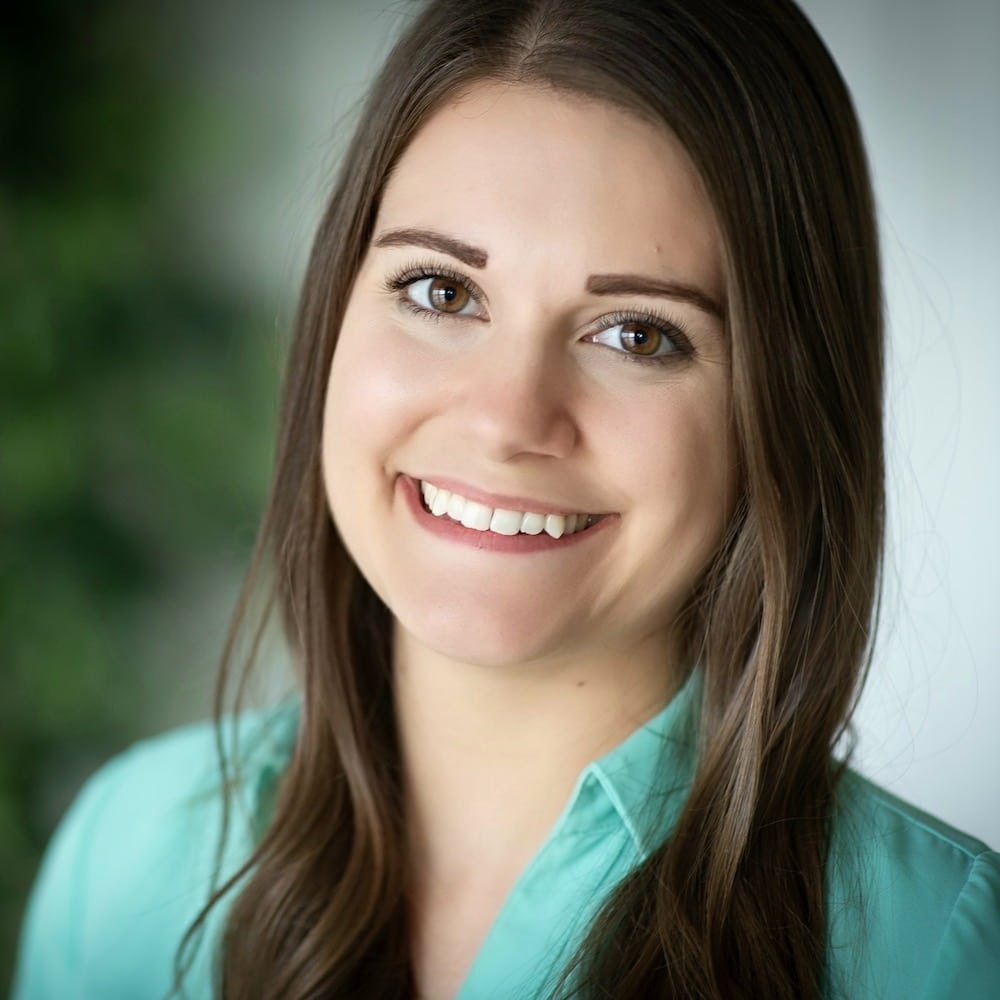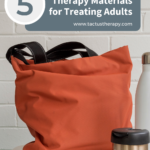5 Essential Speech Therapy Materials for Treating Adults
5 min read
As a mobile speech-language pathologist, it is essential that I keep my bag fully stocked with all the speech therapy materials I may need for my treatment sessions, but I also want it to be lightweight. So how do you know what’s worth carrying when you don’t know exactly what you’ll need?
You actually don’t need fancy speech therapy materials to provide personalized, quality care. You just need your clinical knowledge and skills, some creativity, and some basic but versatile materials. These are my 5 go-to items in my therapy bag and how I use them.
1) A Tablet Loaded with Speech Therapy Apps
I never leave home without my tablet fully charged. (I use an iPad*, but Android tablets* are great too. It’s your choice!) A portable, touch-screen tablet is the perfect, dynamic tool that allows you to do any type of treatment with any type of client. Here’s what you’ll want on your tablet:
There are so many ways to use apps to help adults with aphasia communicate, connect, and improve. Learn from Megan Sutton’s online CEU courses through Medbridge Education. Sign up with promo code “TACTUS” to get a great rate for unlimited CEUs!
2) Paper & Pen
As much as a tablet can substitute for a paper & pen, sometimes you just need the real deal.
- Provide education and follow-up instructions that you can leave with your client.
- Pen & paper gives you a written record to reference later, which allows you to compare performance from beginning to end of therapy or allows the client a way to go back to a topic previously discussed.
- Use a permanent marker for patients with low vision; use a highlighter for keywords.
3) Colorful Adhesive Items
Sticky notes, round stickers, colored tape.* What do these all have in common? They are bright and can easily be applied to ANYTHING. They make perfect visual cues!
- Use sticky notes to label objects around the house for a client with difficulty naming
- Label cabinets & drawers with sticky notes to help with orientation.
- Cut round stickers in half & put them on the back of the most-used keys as a label to help clients with dementia find their house key more easily.
- Place round stickers on the play button on a radio so a client knows where to press to start their favorite music.
- Place colored tape around a light switch as a visual reminder to turn off the lights when leaving a room.
- Make a remote less complex by covering unused buttons with tape.
- Make an outline with tape on a nearby table where the client should keep their keys, glasses, and other important (and often lost) items.
4) Whiteboard
Do you like saving trees? Me too. Also, dry-erase whiteboards never wrinkle, they never run out of pages, the bold marker makes it easy to read, and it’s a sturdy surface to write on if a tabletop isn’t present. This portable whiteboard* is also an easel with two sides!
- Trying to have a patient increase their self-awareness? Draw a visual analog scale or bullseye and have them rate their own speech productions.
- Do any treatment technique you like, such as response elaboration therapy, then easily wipe it away for the next target.
- Go higher-tech with a Boogie Board!* This LCD digital writing tablet lets you save photos of your work, feels like writing with a pen, and lets you slide paper under the writing surface to work on top of a favorite worksheet or template!
5) Laminator
While you may not carry it around with you from room-to-room at your facility, a portable laminator* is a must-have in your home or office.
- Laminate swallowing strategies, print on the bottom half of the page, fold in half to make a tabletop card, and never worry about having to reprint because of a food spill again.
- Laminate a daily schedule that the client or family member can fill in with a dry-erase marker so the client always knows what is going on.
- Did you make a low-tech AAC board for your client? Laminate it for durability and long-term use.
- If there’s a treatment you always use that has a standard framework (e.g. semantic feature analysis), laminate it so you can fill in then erase for the next target.
- Don’t have a laminator? Use sheet protectors!* A low-budget option that will provide similar results to keep pages clean, dry, and reusable.
*These are affiliate links. Purchasing items using these links will give a small percentage of your purchase price back to this site to support our efforts in making practical information like this available and keep it free for you. Thanks!

